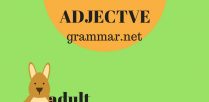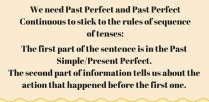Despite a weird name, reflexive pronouns are helpful tools in English grammar, and they are easy to use. A few rules along with some examples and an infographic will tell you everything you need to know about reflexive pronouns.
To download high resolution poster click here.
A Pronoun Refresher
When crafting sentences, writing would become tedious, long and boring if we were required to write out the name of every subject and object.
“Bob hit the snooze button on Bob’s alarm clock four times and nearly broke the alarm clock, but if Bob was late, Bob could blame only Bob.”
English is much easier with pronouns.
“Bob hit the snooze button on his alarm clock four times and nearly broke it, but if he was late, he could blame only himself.”
The normal pronouns are easily recognized: his, it, he. The noun that clarifies each is called an “antecedent” and usually comes before its pronoun, though writers can “put the cart before the horse.” This is done carefully or the sentence could become confusing or awkward. In the following example, there is only one possible “he” and one possible “it.”
“He hit it so hard that Bob was afraid he might have broken his alarm clock.”
What is a Reflexive Pronoun?
You just saw one: the very last word in the second example is the reflexive pronoun “himself.” They “reflect back” to the subject of the sentence or clause and help to “tighten up” sentences, just like normal pronouns. English has eight reflexive pronouns, and they all end in “-self” when singular and “-selves” when plural.
“As Bob scrambled around the house, getting himself ready for work, Betty chuckled to herself, wondering when he would realize it was Saturday.”
As when using the pronouns “he” and “it,” gender is handy to avoid confusion; “himself” obviously refers to Bob, and “herself” refers to Betty. Here are all eight reflexive pronouns and some examples.
Myself
“Walking past the shop, I saw a reflection of myself in the window.”
Himself
“He dusted himself off and stood up.”
Herself
“After work, she treated herself to a hot bath.”
Itself
“The cat cleaned itself with its paws.”
Yourself
“If you stare in mirrors a lot, people may think you are full of yourself.”
Ourselves
“We took a wrong turn and found ourselves in a dead end.”
Yourselves
“‘Feel free to seat yourselves, folks,’ said the waitress.”
Themselves
“The children were old enough to mind themselves and no longer needed a sitter.”
A Quick Word on Intensive Pronouns
In your eagerness to rush out and try your new reflexive pronouns, be careful not to confuse them with intensive pronouns. All eight reflexive pronouns can be used as intensive pronouns, but intensive pronouns are used to add emphasis to a sentence and are unnecessary to comprehension. The way to tell the difference is simple: remove the pronoun, and if the sentence still makes sense, the pronoun is intensive. Otherwise, it is reflexive.
“The horse was half broken, so only Barb herself could ride him.” (Barb and nobody else)
“He saw it himself.” (with his own eyes)
“I myself will eat this blueberry muffin.” (hands off my muffin, buddy)
Even little words can cause problems. Have you had difficulties with pronouns?



![Conditional clauses: tips and tricks. How to master conditions [infographic]](https://www.grammar.net/wp-content/uploads/2013/11/conditional-clauses_small-01-308x95.png)
![Understanding modals of necessity: must, have got to, have to [infographic]](https://www.grammar.net/wp-content/uploads/2013/12/modals-web1-308x95.jpg)



